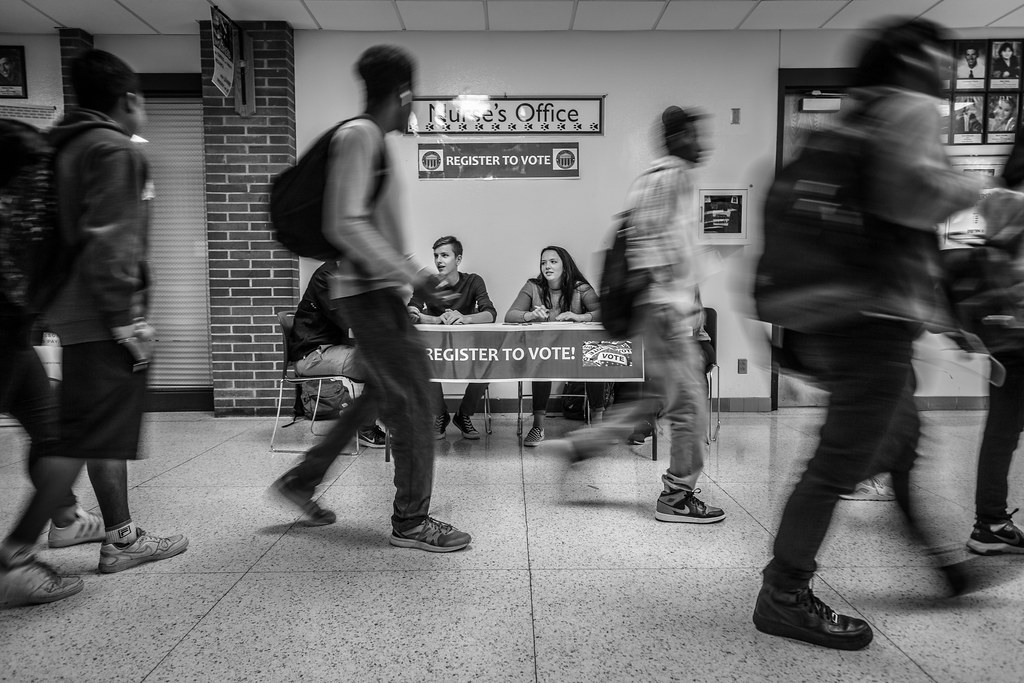Editor’s note, 1/22/20: This afternoon, Washington legislators will hear HB 2529, a bill which proposes moving all local jurisdiction races to even years. The policy could have a dramatic effect on voter turnout across the state, giving more Washingtonians a voice in choosing their city and county leaders.
Fewer voters turn in ballots in odd years, meaning local elected officials represent a smaller portion of voters. What’s more, odd year election turnout dips disproportionately impact voters of color.
Read on to learn more about why a switch to even year elections matters a lot for protecting the right to vote. And see also: Our case study showing the demographics of who votes (and who doesn’t) in odd-year elections. The smaller number voters who turn out in odd-year elections tend to be whiter—and in Seattle, older—than even-year and presidential year general election voters.
Washington state law requires local jurisdictions to hold elections during odd years. But fewer voters turn in ballots in odd years, meaning local elected officials represent a smaller portion of voters.
Even if some don’t make it all the way through the ballot, it’s still better participation than odd-year local elections.
Some state legislators worry that even-year ballots would grow too long, deterring voters from making it all the way to local races at the bottom of the ballot. It is true that more people vote for races at the top of the ballot—like President of the United States—than for races at the bottom, like Port Commissioner. The technical term for this is “down-ballot drop-off.” But is down ballot drop-off steeper than the boost in overall even-year turnout? Washington legislators are in luck: they can look to natural experiments in Oregon and in their own backyards to answer their questions. Cities, counties, and commissions in Oregon already hold elections in even years and so do Pierce and Clark counties in Washington. And like Washington, Oregon counties administer all of the state’s elections, offering an apples-to-apples comparison.
The data shows the ballot gets long but more people vote. Even if some don’t make it all the way through the ballot, it’s still better participation than odd-year local elections.
To reach that conclusion, I looked at the largest counties in Oregon and Washington and identified nine 2018 contested, county-wide races in Oregon and two in Washington. Voter participation in those races ranged from 52 to 69 percent. I compared those with nine contested, county-wide races in Washington in 2015 or 2017. Participation in those elections ranged from 23 to 43 percent. The results couldn’t be more clear: even with a long ballot, solid majorities of voters in Oregon and Washington contribute their say in local races in even-years compared to a mere one-third or so of Washington voters in odd-years.

To be clear, Oregonians and Washingtonians participated in the 2016 presidential year elections at the same rate—both averaged about 78 percent turnout. That data only reinforces the notion that Washington is cutting a large swath of voters out of the local process by holding most local elections in odd years.
Research Note:
While they are thinking about odd- and even-year elections, legislators might want to do another bit of housekeeping–pay for their share of even-year elections. Right now, counties pay to administer elections and the recover some of their costs by billing other jurisdictions for their share. But the state only pays in odd-years, not in even. I don’t know how this odd (pun intended) situation arose, but it unfairly burdens counties with millions of dollars in costs of even-year state elections. Moving more elections to even years, and making all jurisdictions pay their share could reduce costs for everyone by spreading fixed costs across more races.
Methodology
- I identified the ten most populous counties in Oregon and ten in Washington.
- For each Oregon county, and also for Pierce and Clark counties in Washington, I looked at 2018 election results and identified a contested (two or more options on the ballot) county-wide race. Only Lane County did not have such a race.
- For each Washington county, I looked at 2017 election results and identified a contested (two or more options on the ballot) county-wide race. Snohomish, Spokane, Clark, and Skagit did not have such a race. For those, I looked at 2015. Only Skagit still did not have such a race.
- I recorded the total number of registered voters in the county, the total number of ballots turned in during that election and the number of votes for the county-wide race. I divided the number of votes in the local race by the number of registered voters in the county to find the voter participation percentage in the county race.
- For each county, I also recorded the total number of registered voters in the county, and the total number of ballots turned in during 2016 to find the voter participation percentage in 2016.
- You can see the details here.

